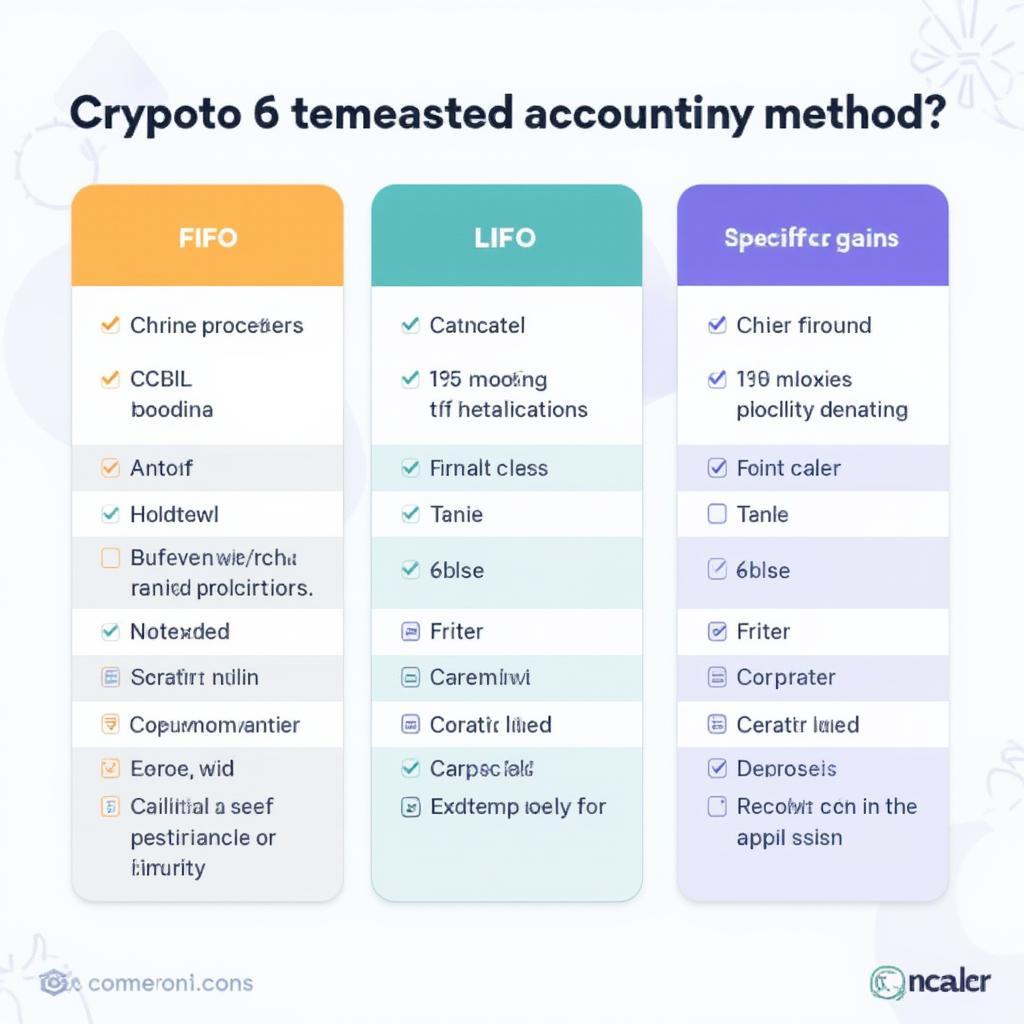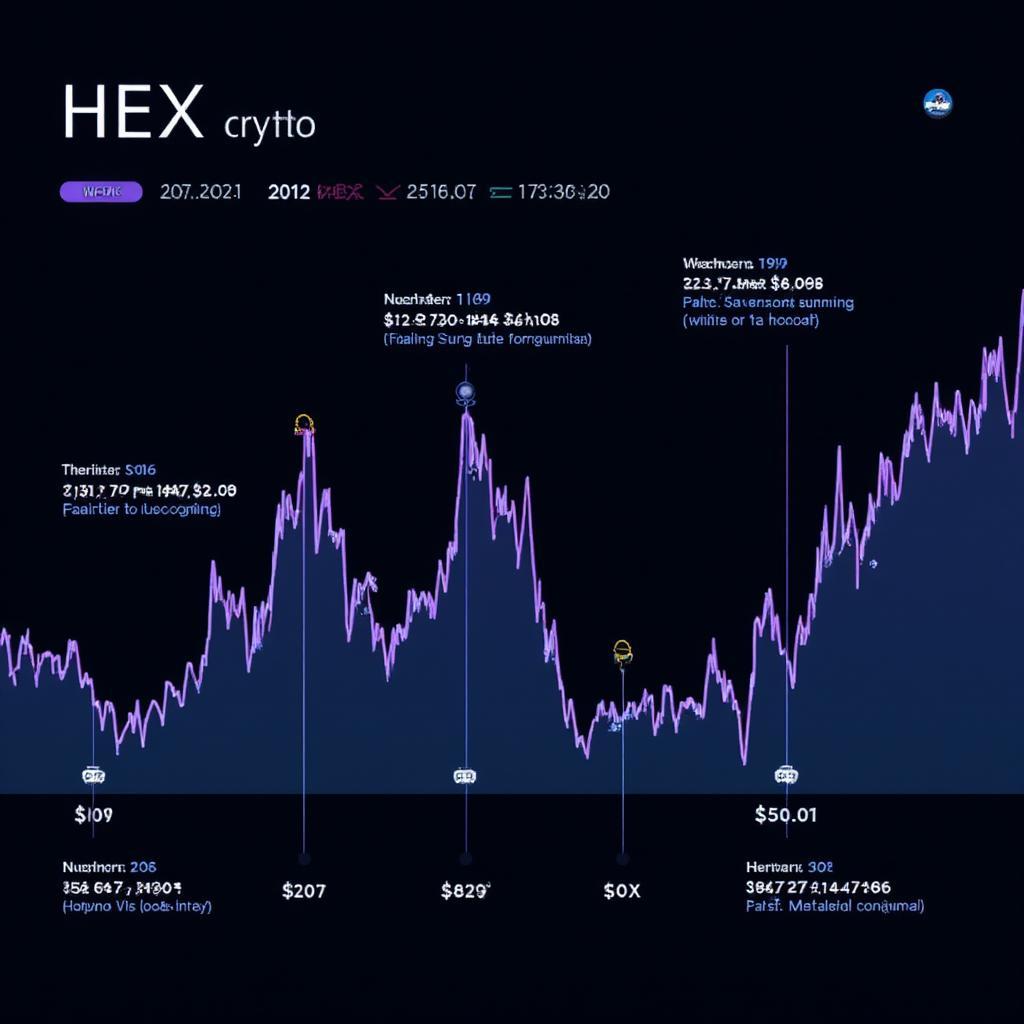Crypto Farming: Unearthing the Secrets to Yield Generation in the Digital Age

Crypto Farming, also known as yield farming, has emerged as a revolutionary method for generating passive income within the decentralized finance (DeFi) landscape. It involves lending or staking your cryptocurrency holdings to earn interest or rewards, presenting a compelling alternative to traditional savings mechanisms. It’s like growing digital crops, but instead of reaping physical harvests, you’re accumulating more crypto. This comprehensive guide will delve into the intricacies of crypto farming, from its underlying principles to the practical strategies you can employ.
Understanding the basic concept, crypto farming operates on the principles of supply and demand, much like any other financial market. By providing liquidity to decentralized exchanges (DEXs) or participating in staking protocols, you contribute to the overall health of the network and are compensated for it. The rewards are typically distributed in the form of additional tokens, either the same tokens you have staked or other governance tokens associated with the platform. To fully embrace this, you should understand the nuances. A deep dive is what will truly help you navigate the complex world of DeFi.
How Does Crypto Farming Actually Work?
At its core, crypto farming involves locking up your cryptocurrency assets in a smart contract in exchange for rewards. These smart contracts act as automated agreements that facilitate the lending, borrowing, and trading of digital assets without the need for intermediaries. The specific mechanisms can vary significantly between different platforms and protocols. Some of the most common methods include providing liquidity to a DEX, staking tokens on a Proof-of-Stake (PoS) network, or participating in lending platforms.
Essentially, you become a liquidity provider, enabling trading and other activities within the DeFi ecosystem. In return for risking your assets, you’re rewarded with a share of the transaction fees or newly minted tokens. It’s also important to understand the risks involved. Like any investment, crypto farming carries potential downsides, and the possibility of loss is always there. The complexity of smart contracts adds another layer of risk, and vulnerabilities could lead to the loss of funds. Diversification is key to mitigating risks.
Key Components of Crypto Farming
To truly grasp the concept of crypto farming, it’s crucial to understand the various components involved. These elements work in tandem to create the ecosystem that allows for the generation of passive income through digital assets. These components include:
- Liquidity Pools: These are collections of cryptocurrencies locked within smart contracts that allow for decentralized trading. Liquidity providers deposit their tokens into these pools in exchange for a share of the transaction fees generated.
- Decentralized Exchanges (DEXs): These platforms allow for the peer-to-peer trading of cryptocurrencies without the need for intermediaries. DEXs rely on liquidity pools to facilitate trades.
- Staking Platforms: These platforms allow holders of Proof-of-Stake (PoS) cryptocurrencies to lock up their tokens to help secure the network in exchange for staking rewards.
- Lending Platforms: These platforms allow users to lend their cryptocurrencies to others in exchange for interest, similar to traditional lending institutions.
- Smart Contracts: These are automated agreements encoded in programming languages. They execute transactions and enforce conditions when certain criteria are met. Smart contracts are fundamental to DeFi and facilitate secure and transparent operation.
Understanding these components can significantly enhance your ability to navigate the complexities of crypto farming. It’s not just about finding the highest yield, it’s about understanding the technology and its implications for your investments.
Diving Deeper: Types of Crypto Farming Strategies
The world of crypto farming is vast, offering various strategies depending on your risk tolerance, understanding, and time investment. Some strategies are relatively simple and suitable for beginners, while others demand more expertise and involve higher risk but potentially offer greater rewards. Here’s an overview of some of the popular approaches.
Liquidity Providing on DEXs
One of the most common strategies is providing liquidity to a decentralized exchange (DEX). When you deposit your assets into a liquidity pool, you enable traders to buy and sell cryptocurrencies. This method has become a core component of DeFi. In return, you receive a share of the trading fees paid by the users. The amount of rewards will be proportional to your share of the pool.
The advantages of this strategy are its simplicity, the ability to easily convert your profits into various cryptocurrencies, and the relatively passive nature of the income generation. However, it comes with the risk of impermanent loss, where the value of your deposited assets can fluctuate relative to the value of holding them outside the pool. If the price of tokens changes significantly, you may end up with a lower dollar value than if you had simply held the tokens.
Staking on Proof-of-Stake (PoS) Networks
Staking is another prevalent form of crypto farming, particularly applicable to Proof-of-Stake (PoS) cryptocurrencies. By staking your tokens, you participate in the consensus mechanism of the blockchain, and secure the network operations, in return for which you are awarded with staking rewards. These rewards can be either newly minted tokens or a share of transaction fees. Staking can be done through a node you run yourself or via a platform that provides staking as a service.
Staking typically provides a less volatile income stream when compared to liquidity providing, since your earning are not tied directly to the volatility of the market. It also supports the infrastructure of a project. The risk is generally lower, but the reward rates might be lower as well. The risk might include lock-up periods where you might not be able to get access to your funds right away, or penalization for malicious activities or if you disconnect from the network.
Lending Platforms
Lending platforms facilitate the borrowing and lending of cryptocurrency, allowing users to earn interest on their assets. They are designed to connect borrowers and lenders. These platforms often function like a traditional bank but with cryptocurrencies, offering lending rates that are typically higher than those offered by conventional banks.
The advantages of lending platform includes a predictable income stream, as the interest rates are often fixed or stable. However, the risk is tied to the platform’s solvency and security. Smart contract vulnerabilities are always a threat to such systems, and a platform breach could potentially result in the loss of funds. Also, the rates and conditions can change, impacting overall yields.
“Crypto farming is not just about chasing high APYs; it’s about understanding the risks and rewards of each strategy and choosing those that align with your financial goals and risk tolerance.” – Dr. Anya Sharma, DeFi Strategist.
Navigating the Risks and Rewards
While the allure of generating passive income with crypto farming is undeniable, it’s critical to understand both the potential rewards and the inherent risks involved. Like any form of investment, there are no guarantees, and the value of your assets and the profitability of your farming strategies can fluctuate based on the market volatility and other factors.
The rewards of crypto farming can be substantial, with some platforms offering returns far exceeding traditional savings accounts. The potential for earning passive income is what attracts people to crypto farming. However, the risks associated with crypto farming should not be ignored. These risks can range from impermanent loss, smart contract vulnerabilities, rug pulls (where projects suddenly disappear with investor funds), volatility and liquidity risks, and regulatory uncertainties.
It’s prudent to approach crypto farming with a strategy. This may involve:
- Researching and Choosing Reliable Platforms: Not all platforms are created equal, some are more trustworthy than others. It’s recommended to do in-depth research on any platform before committing any of your funds.
- Diversifying Your Assets: Spreading your assets across different farming opportunities can help minimize the impact of a loss from a single platform or project.
- Starting with Small Amounts: It is recommended to start small and increase your investment only when you have a better understanding of the process.
- Staying Informed About the Market: Keeping up to date with market news and trend is essential to effectively manage your risks and optimize your returns.
- Understanding Smart Contracts: If possible, understanding the core mechanics of smart contracts may help mitigate certain types of risks.

Getting Started with Crypto Farming
If you’re ready to take the plunge into crypto farming, here’s a step-by-step guide to help you get started:
- Choose a Reputable Platform: Research and select a farming platform with a good track record, a secure environment, and a user-friendly interface. Start by exploring platforms like crypto com earn, which offer a variety of options.
- Obtain the Necessary Cryptocurrencies: Purchase the cryptocurrencies required to participate in your chosen farming strategy. Consider diversifying your assets to spread risk, look at some trending coins such as buy pancat cryptocurrency.
- Connect Your Wallet: Link your cryptocurrency wallet to the selected platform. This will enable you to deposit and withdraw your assets.
- Choose a Strategy: Select a farming strategy that aligns with your risk tolerance and financial goals, ensuring you have a basic understanding of each.
- Deposit Your Funds: Deposit the cryptocurrency required for your chosen strategy into the smart contract or pool, and start engaging with the strategy you picked.
- Monitor Your Investment: Regularly monitor your returns and the performance of your strategy and be prepared to make adjustments where necessary.
- Harvest Your Rewards: Claim your rewards at regular intervals and re-invest or withdraw them as you see fit.
Remember, the key to successful crypto farming is to remain informed, start small, and diversify your assets across different strategies and platforms. Also keep in mind that the cryptocurrency landscape is ever evolving, with new project always entering the arena, such as the 360 coin.
Essential Tools for Crypto Farming
Several tools can assist you on your crypto farming journey. These resources can help you analyze and manage your assets effectively. Some of these tools include:
- DeFi Tracking Apps: These apps allow you to monitor your holdings and returns across various DeFi platforms.
- Yield Farming Aggregators: These platforms compare yields across different farming opportunities, helping you find the best rates.
- Blockchain Explorers: These tools allow you to track transactions and analyze smart contract data.
- Price Tracking Websites: Stay informed about the prices of different cryptocurrencies by using a reliable price tracking website.
- Community Forums and Social Media: Stay informed about the latest trends and project by being active in community forums and social media groups.
Future of Crypto Farming
The future of crypto farming looks promising, with ongoing innovation and development within the DeFi space. As more users adopt cryptocurrency and decentralized finance, the potential for generating passive income through farming is likely to grow. New protocols and techniques are constantly being developed, promising new methods for generating yield and better risk mitigation.
However, with growth also comes increased regulatory scrutiny. The regulatory landscape regarding DeFi and crypto farming is still developing, and future regulations could have a big impact on the accessibility and profitability of crypto farming. Also, increased competition within the space could impact the profitability of certain strategies.
“The potential of crypto farming lies in its ability to provide access to financial opportunities beyond the constraints of traditional banking systems, thereby empowering individuals and democratizing finance.” – Ethan Blackwood, Blockchain Consultant.
Conclusion
Crypto farming offers an exciting opportunity to generate passive income within the world of decentralized finance. It involves locking up your cryptocurrency assets in smart contracts to earn rewards in the form of additional tokens or transaction fees. By providing liquidity, staking tokens, or participating in lending platforms, you can contribute to the health of the network while earning passive income. However, it is important to recognize that along with the potential rewards, risks are involved. The key to success is to be informed, diversify your assets, and use caution when selecting platforms. As the DeFi landscape evolves, it’s crucial to stay informed to make the best decision. You may want to explore other opportunities as well like superfarm crypto or options using compound crypto.
The path to successful crypto farming requires more than a desire for profit. It demands careful consideration of your risk tolerance, an understanding of the involved mechanisms, and a willingness to adapt as the market evolves. With the correct approach, crypto farming may be a crucial component of a forward-thinking and financially sound portfolio.
Frequently Asked Questions (FAQs)
-
What exactly is crypto farming? Crypto farming involves lending or staking your cryptocurrency assets through decentralized platforms to earn interest or rewards, generating passive income through digital assets.
-
Is crypto farming safe? Crypto farming has risks, including volatility, smart contract vulnerabilities, and impermanent loss. Proper research and diversification are essential to mitigating these risks.
-
What are liquidity pools? Liquidity pools are collections of cryptocurrencies locked into smart contracts that facilitate decentralized trading. These pools enables user to buy and sell assets.
-
What is impermanent loss? Impermanent loss is the loss in value that can occur when the prices of the assets you have deposited in a liquidity pool change relative to the value of holding them outside the pool.
-
How can I choose a safe platform for crypto farming? To select a reputable platform, thoroughly investigate its background, security measures, and user reviews. Also, start by using smaller amounts.
-
What cryptocurrencies are used for farming? Many cryptocurrencies can be used for farming, including ETH, USDT, DAI, and others. It’s important to choose assets that align with your risk tolerance and farming goals.
-
How do staking and liquidity providing differ? Staking involves locking up tokens to support a PoS network and earn rewards. Liquidity providing entails depositing tokens into pools to facilitate trades and earn a share of fees.
-
What are the essential tools for crypto farming? Tools such as DeFi tracking apps, yield farming aggregators, and blockchain explorers can help you manage and track your farming activities.
-
What should I do before starting crypto farming? Prior to commencing, thoroughly research the platform, comprehend the associated risks, and consider beginning with a modest investment.




